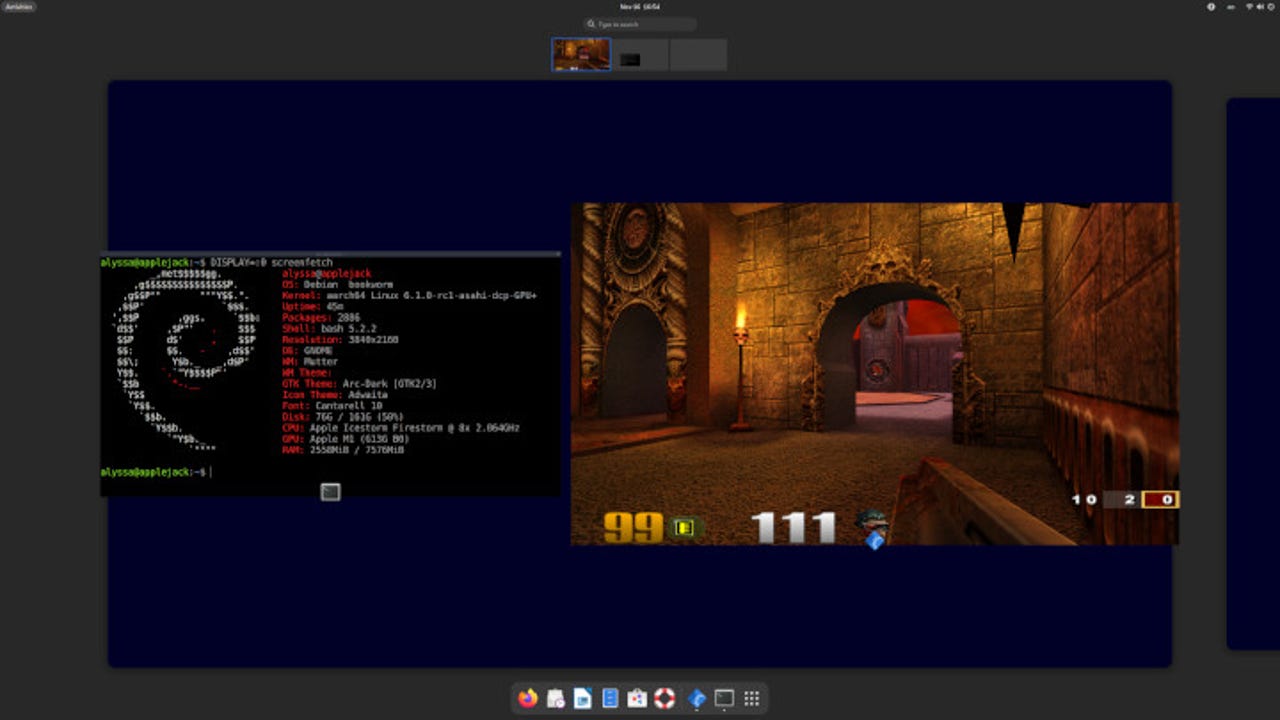Linux 6.2: The first mainstream Linux kernel for Apple M1 chips arrives


Thanks to Asahi Linux developers' work, Linux 6.2 is now ready to run on M1-powered Macs.
Linux 6.2 was released yesterday, and Linus Torvalds described the latest Linux kernel release as, "Maybe it's not a sexy LTS release like 6.1 ended up being, but all those regular pedestrian kernels want some test love too."
For once, I disagree with Torvalds.
Also: Microsoft finally authorizes Windows 11 on Apple M1 and M2 Macs
By adding upstream support for the Apple M1 Pro, M1 Max, and M1 Ultra chips, newer Mac owners can look forward to running Linux on their M1-powered machines. And, for techies, that's sexy.
See also
Getting Linux to run on the M1 family wasn't easy.
When these high-powered ARM chips first arrived, Torvalds told me in an exclusive interview that he'd like to run Linux on these next-generation Macs. But, while he'd been "waiting for an ARM laptop that can run Linux for a long time," he worried, saying, "The main problem with the M1 for me is the GPU and other devices around it because that's likely what would hold me off using it because it wouldn't have any Linux support unless Apple opens up."
Fortunately, Asahi Linux, with brilliant software engineer Alyssa Rosenzweig, was up to the challenge. By July 31, 2022, Torvalds was pleased to announce that after "waiting for a _loong_ time, [Linux on ARM and the M1 in specific was] finally reality, thanks to the Asahi team. We've had arm64 hardware around running Linux for a long time, but none of it has really been usable as a development platform until now."
Today, this support is finally ready for mainline Linux users. Of course, it's all experimental at this point, but it won't be for much longer. Linux 6.2 is expected to become Ubuntu 23.04's default kernel and to be included in Fedora 38 before the late April release of Linux 6.3.
Also: SparkyLinux is a no-frills Linux distribution anyone can use
In the meantime, the 2022 Long Term Support (LTS) kernel, Linux 6.1, will continue to be maintained until at least the end of 2026. Fixes from the 6.2 release are expected to be back-ported to 6.1.
In addition, the Linux 6.2 kernel includes numerous features with contributions from companies such as Intel, AMD, Google, and Red Hat. Notable additions include stable support for Intel Arc Graphics (DG2/Alchemist) enabled out of the box and initial support for Nvidia GeForce RTX 30 series "Ampere" accelerated graphics with Nouveau open-source code. The Linux 6.2 kernel also includes updated drivers. This includes support for Sony DualShock 4 gamepads, sensors, and fans in the OneXPlayer gaming handheld, Habana Labs' Gaudi2 AI accelerator, and Asus motherboards.
This new kernel also includes Call Depth Tracking to help improve performance on older Intel Skylake-era PCs, along with various file-system driver enhancements and security improvements. In addition to new hardware support, the NTFS3 file kernel driver has also been improved and updated with new mount options.
Also: How to install Linux on your Raspberry Pi
Overall, the Linux 6.2 kernel offers significant new hardware enablement and features. But, the real news, as far as I'm concerned, is the M1 support. This is a game changer for Linux Mac users.